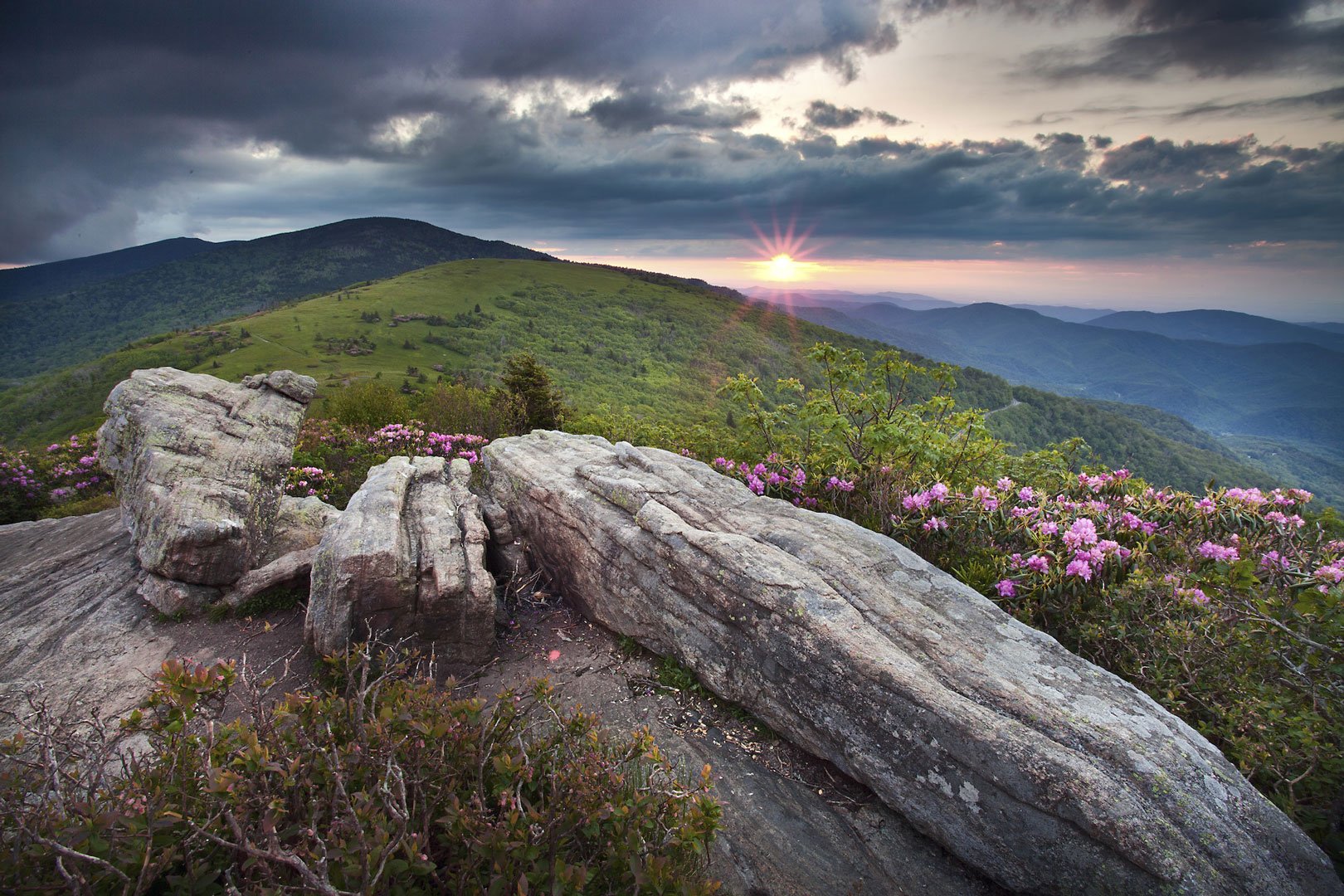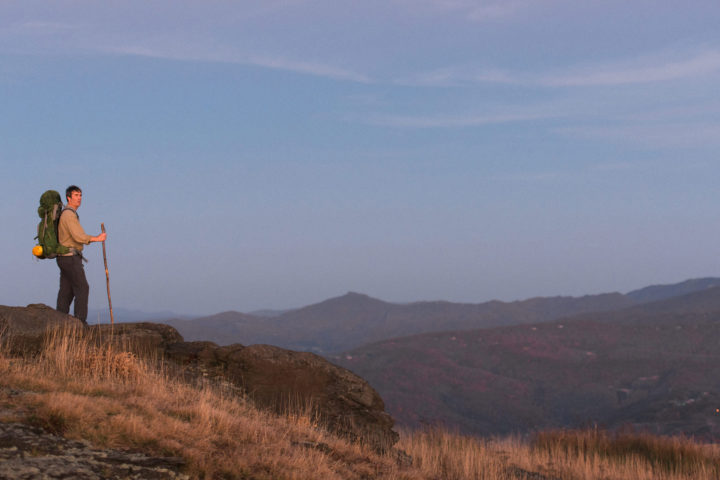By Alyson Browett
A Climate-Resilient A.T. Depends on Effective Federal Policy
April 9, 2021
The following post is part of our series on climate change and the Appalachian Trail. For other parts in the series, click the links below.
- Part One – Preserving the “Oxygen” of the Trail
- Part Two – The A.T. and Climate Change: Reviewing the Basics
- Part Three – Climate Resiliency and the A.T.
- Part Four – Climate Action and the A.T. Landscape: A Primer
- Part Five – A Climate-Resilient A.T. Depends on Effective Federal Policy
- Part Six – Building a Climate-Resilient A.T. Landscape
Anyone who has hiked on the Appalachian Trail (A.T.) knows there is more to the experience than setting one foot in front of the other. Think of the beautiful forests, the diversity of birds and wildlife, the bucolic vistas, the rolling balds and lowland fields, as well as the camaraderie with other hikers, gathering at shelters, and the various histories and cultures along all those miles of Trail.
Because the Trail does not exist in isolation, the Appalachian Trail Conservancy (ATC) is responsible for protecting all of its values — scenic, historic, natural, and cultural.
And climate change impacts all of them.
Climate change is indisputably one of the largest challenges the A.T. (and the world at large) faces. Yet one of the most effective tools we have to help mitigate these impacts has been a part of the ATC’s work for almost a century: engaging in the creation of federal policy designed to protect the lands we love.
“If we’re not engaged with lawmakers and policymakers in Washington, D.C., the ATC would be unable to protect the Trail and would not be able to be fully present on all fronts of Trail threats,” said Brendan Mysliwiec, ATC’s Director of Federal Policy and Legislation.
A Brief History: Federal Legislation and the A.T.
By studying the vital role federal policy engagement has had on the protection of the A.T. throughout its history, one can better understand the impact this work can have on the Trail’s future — particularly regarding pressing issues like the impacts of climate change.
When the A.T. was initially constructed, large tracts of land through which the footpath traveled were secured through “handshake deals,” in which local landowners granted permission for hikers to pass through their property. If there was no easement held by the ATC or a federal land managing agency like the U.S. Forest Service, these lands could be sold — and the new owners could tell the ATC, local trail clubs, and trekkers alike to go take a hike (and not in a fun way). In addition, increasing development along the Trail boomed throughout the following decades, leading to extensive relocations of the footpath to maintain the Trail’s natural hiking experience.
It quickly became apparent that the A.T.’s long-term sustainability depended on greater protections for the footpath itself and its surrounding lands. For years, the ATC lobbied Congress for the A.T. to receive federal protection, and in 1968, it succeeded: President Lyndon B. Johnson signed into law the National Trails System Act (NTSA). This established the A.T. and its sister trail, the Pacific Crest Trail, as federally protected land units. By taking the A.T. into the federal land family, the federal government agreed to assert its legal authority to prevent injury to the A.T. and to spend money on the A.T.’s maintenance and land acquisition to fulfill the mission of a National Scenic Trail: to provide recreation, conservation, and enjoyment of significant scenic, historic, natural, or cultural qualities.

For years the ATC worked with Congress to provide federal protection for the A.T., which culminated in 1968 when President Lyndon B. Johnson signed the National Trails System Act into law. Image courtesy of Jack Rottier.
The ATC was integral in shaping the NTSA and helping Congress understand the importance of volunteers in the creation and maintenance of trails, so the legislative history of the law and subsequent implementations by the Park Service granted the organization a formal role in managing the A.T. — a role that was further enhanced by the A.T. Bill of 1978. That Act reflected the enthusiasm in Congress for the A.T. by making money available to build out the protected Corridor, particularly through Virginia, the mid-Atlantic, and portions of New England.
“If the ATC did not engage with the federal government, there would be no Trail, because there would be no money to fund the NPS unit office that does critical and necessary work and no agreement under which volunteers can work to maintain the footpath,” said Mysliwiec.
And with climate change predicted to have such a large impact on the A.T. landscape, ensuring the Trail is resilient is a continual focus of the ATC’s work.
Advocating for a Climate Resilient Trail Corridor
As was the case with the creation of the NTSA, advocating for effective federal legislation and policy is essential for fighting climate change, and for preserving the existing protected A.T. corridor and surrounding landscape.
The ATC constantly works with Congress to support legislation that directly impacts our work to combat climate change. One recent success has been touted as the most significant piece of conservation legislation in decades: the Great American Outdoors Act (GAOA). This legislation, passed in 2020, will be transformative for the A.T. and other U.S. public lands as they buffer their lands to become more climate-resilient.
In addition to providing billions for park infrastructure repairs and enhancement, GAOA provides full and permanent funding of the Land and Water Conservation Fund (LWCF), guaranteeing at least $900 million per year for key land acquisition projects. The LWCF underwrote virtually the entire 37-year A.T. land-acquisition project, protecting such places as Blood Mountain in Georgia, the Roan Highlands of Tennessee and North Carolina, the Cumberland Valley of Pennsylvania, and community forests throughout New Hampshire and Vermont. LWCF will be an essential tool as the ATC focuses on preventing the loss of additional forested lands.
In short, LWCF (through its permanent funding by GAOA) greatly enhances the ATC’s ability to fulfill its mission by providing funding to protect the landscape surrounding the A.T., helping to create a climate change-resilient, intact, and contiguous green space that is vital to the survival of native plants and animals. And as we have seen over the past year, critical as a respite for humans.

Policies like the Land and Water Conservation Fund are essential tools for protecting the A.T. landscape, ensuring it is resilient against climate change and that the many benefits of the Trail — including its unique hiking experience — are preserved. Image courtesy of Brent McGuirt Photography.
It is important to note, however, that successes like the GAOA do not happen overnight. The ATC and its partners spent years working with legislators, other conservation organizations, and public lands supporters to help ensure this Act moved forward. The same is true for any legislation that could benefit the Trail.
One of those policies, led by U.S. Representative Annie Kuster (NH-02) and several co-sponsors, was introduced last year as the Scenic Trail Viewshed Protection Act (HR 7878). Kuster was inspired by the ATC’s pipeline policy to craft the legislation, which would require stricter evaluation of natural gas pipeline projects that cross National Scenic Trails or their surrounding viewsheds.
Legislation such as this is essential not only for the scenic values that could be damaged by pipeline infrastructure, but also for minimizing forest fragmentation and methane emissions that can contribute to climate change. According to Mysliwiec, though the bill did not move out of committee in the 116th Congress, it could be reintroduced in the current session.
These are some examples of the legislative work supported and, in many cases, influenced by the ATC’s work. However, none of this can be accomplished without the support of A.T. and public land lovers around the world. From mailing letters to Members of Congress to donating to organizations like the ATC that advocate for these irreplaceable national treasures, you are a part of the story of how challenges like climate change will ultimately be overcome.
“The A.T. needs the ability to fight off any threat to the Trail or the experience of the Trail, and the ATC provides that service, but not without the help of Trail maintainers, Trail club members, all those who donate, and anyone who sets foot on the Trail,” Mysliwiec said. “If you want something to exist, you have to care for it. And that’s what we want other people to do with us.”
Your donation supports our work to fortify the Appalachian Trail against the effects of climate change, helping ensure it will continue to benefit us all for generations to come.
Discover More

Official Blog
The A.T. and Climate Change: Reviewing the Basics
As we continue our series on climate change and its effects on the Appalachian Trail, it is important to lay the groundwork for several key topics.

Official Blog
Preserving the “Oxygen” of the Trail
How Benton MacKaye’s call for protecting the “oxygen in the mountain air along the Appalachian skyline” guides our work in combating climate change on the A.T.

ATC's Official Blog
A.T. Footpath
Learn more about ATC's work and the community of dreamers and doers protecting and celebrating the Appalachian Trail.
